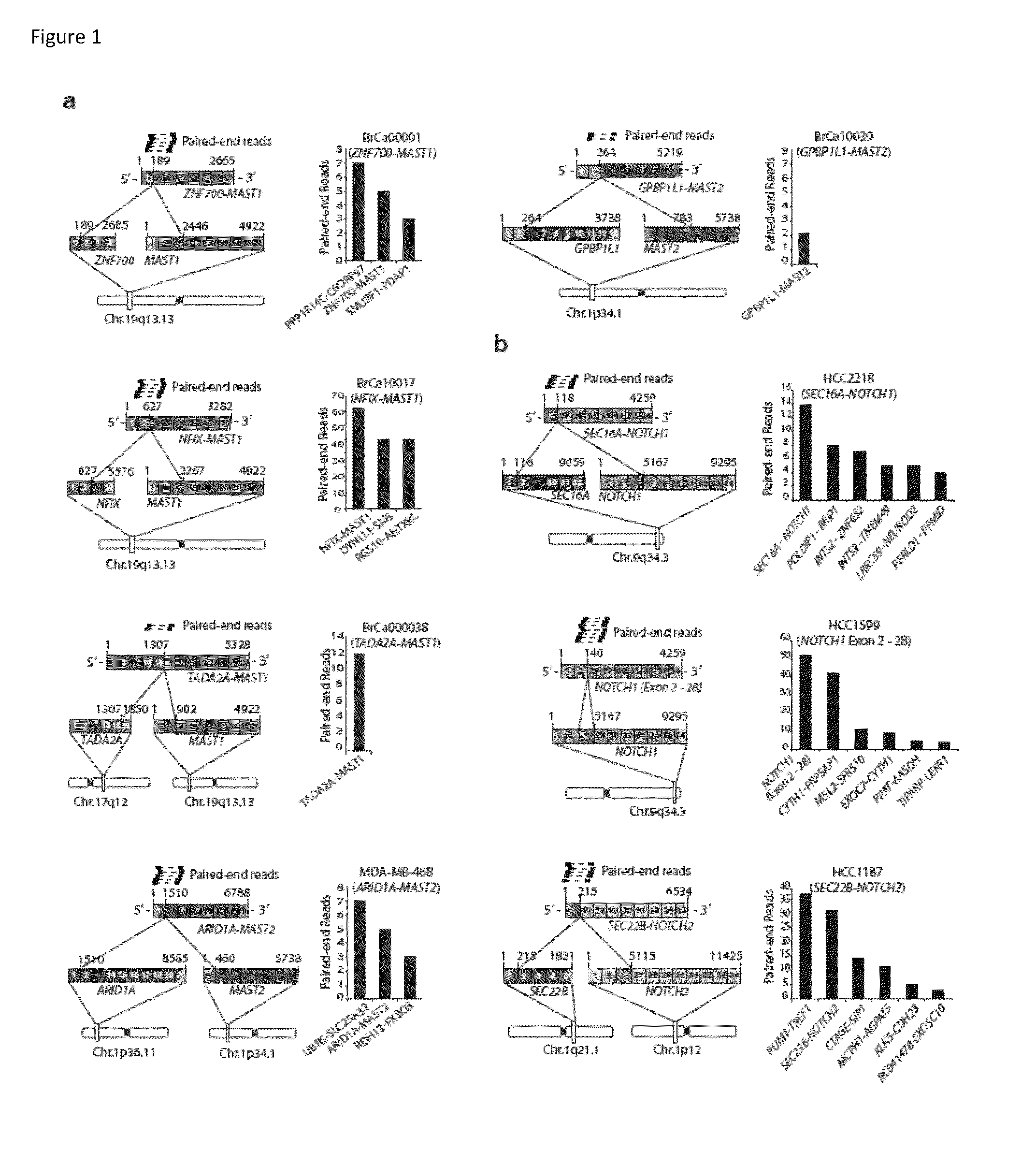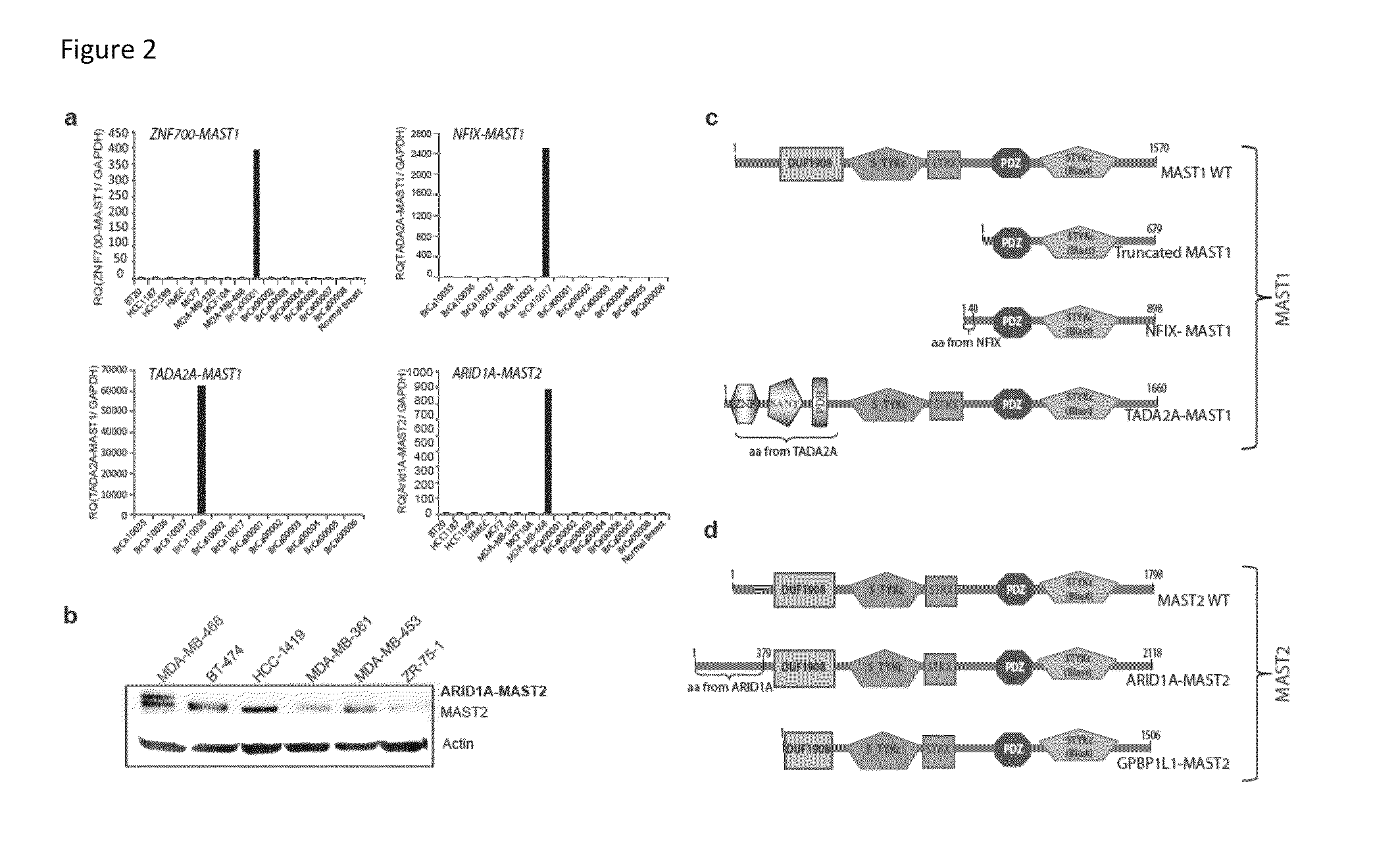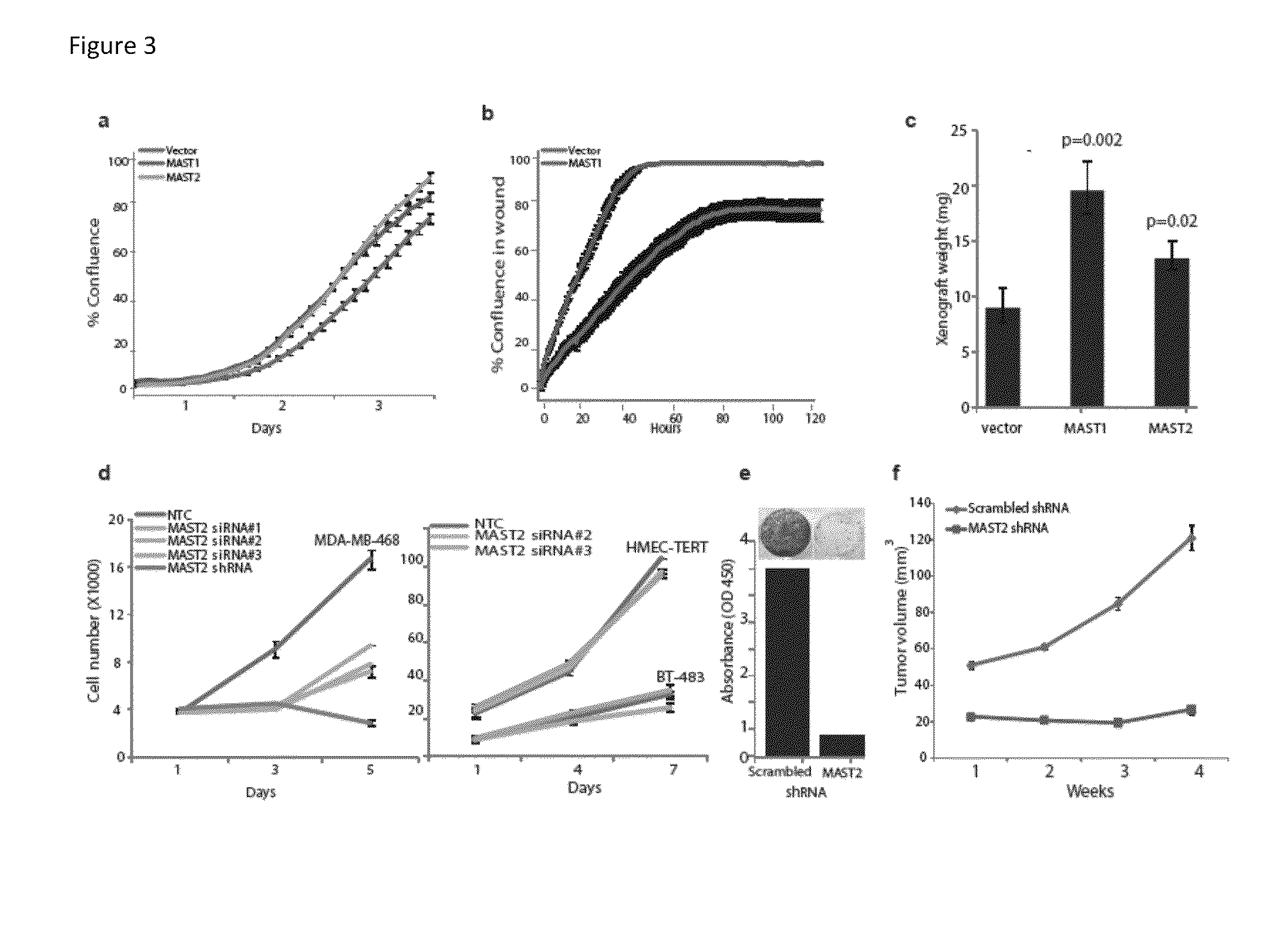Recurrent gene fusions in breast cancer
a breast cancer and fusion technology, applied in the field of cancer diagnosis, research and treatment, can solve the problem that no treatment fits every patient, and achieve the effect of increasing the percent of target-reactive immunoglobulins
- Summary
- Abstract
- Description
- Claims
- Application Information
AI Technical Summary
Benefits of technology
Problems solved by technology
Method used
Image
Examples
example 1
Materials and Methods
Cell Lines and Specimen Collection
[0164]Breast cancer cell lines were purchased from the American Type Culture Collection (ATCC) or obtained from individual collections. Cells were grown in specified media supplemented with fetal bovine serum and antibiotics (Invitrogen), or supplements designated for the media (Lonza). This study was approved by the respective Internal Review Boards and breast cancer samples were obtained from the University of Michigan and the Breakthrough Breast Cancer Research Centre, Institute of Cancer Research (London, UK). Table 2 shows the complete list of cell lines and tissue samples used for this study.
Paired End Transcriptome Sequencing and Nomination of Gene Fusions
[0165]Total RNA was extracted from normal and cancer breast cell lines and breast tumor tissues using Trizol reagent (Invitrogen), and further purified on RNeasy columns (QIAGEN) according to the manufacturer's instructions. Five additional human breast cancer total RNAs...
example 2
Additional Breast Cancer Markers
[0200]Experiments were conducted to identify additional fusions in breast cancer. Experiments identified an FGFR fusion in breast cancer and functionally recurrent fusions of ETV6 in breast cancer.
Table 9 shows FGFR3 fusions in a variety of cancers. FIGS. 17-18 show FGFR3 gene fusions.
5′3′SampleTissueSampleReadGeneGeneNameTypeType#FGFR3TACC3NC8OralCell line87FGFR3TACC3NC9OralCell line67FGFR3TACC3C010LungTissue27FGFR3BAIAP2L1SW780BladderCell line297FGFR2BICC1MO_1039Cholangio-Tissue1041carcinomaFGFR2BICC1MO_1036Cholangio-Tissue259carcinomaFGFR2AFF3MO_1051BreastTissue138
[0201]Fibroblast growth factors (FGFs) (FGF1-10 and 16-23) are mitogenic signaling molecules that have roles in angiogenesis, wound healing, cell migration, neural outgrowth and embryonic development. FGFs bind heparan sulfate glycosaminoglycans (HSGAGs), which facilitates dimerization (activation) of FGF receptors (FGFRs). FGFRs are transmembrane catalytic receptors that have intracellul...
PUM
| Property | Measurement | Unit |
|---|---|---|
| diameter | aaaaa | aaaaa |
| gel melting temperature | aaaaa | aaaaa |
| concentration | aaaaa | aaaaa |
Abstract
Description
Claims
Application Information
 Login to View More
Login to View More - R&D
- Intellectual Property
- Life Sciences
- Materials
- Tech Scout
- Unparalleled Data Quality
- Higher Quality Content
- 60% Fewer Hallucinations
Browse by: Latest US Patents, China's latest patents, Technical Efficacy Thesaurus, Application Domain, Technology Topic, Popular Technical Reports.
© 2025 PatSnap. All rights reserved.Legal|Privacy policy|Modern Slavery Act Transparency Statement|Sitemap|About US| Contact US: help@patsnap.com



